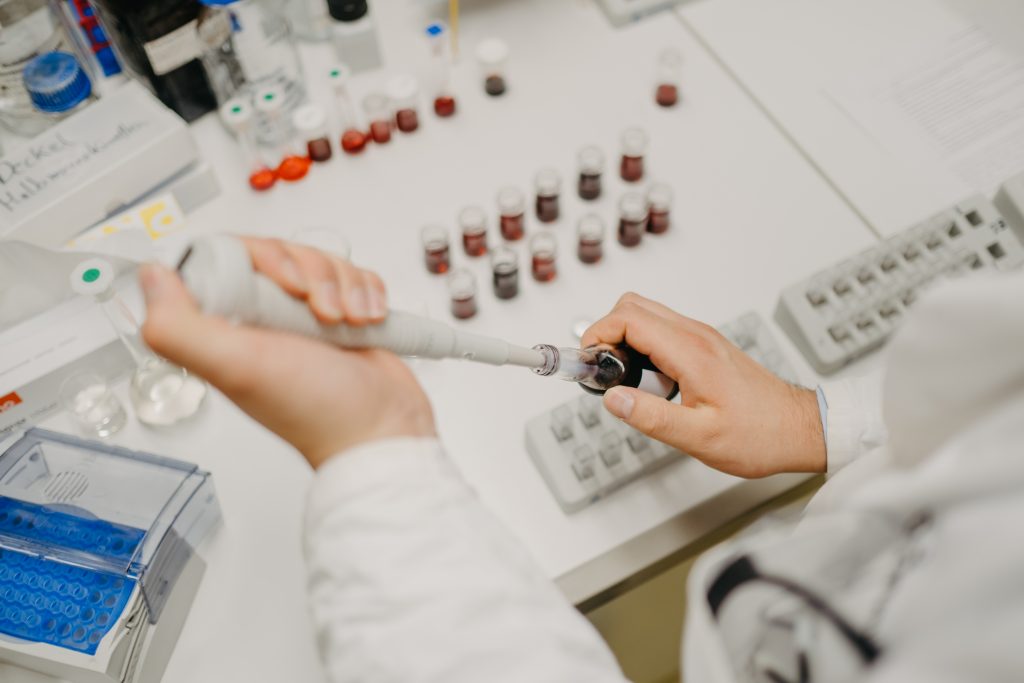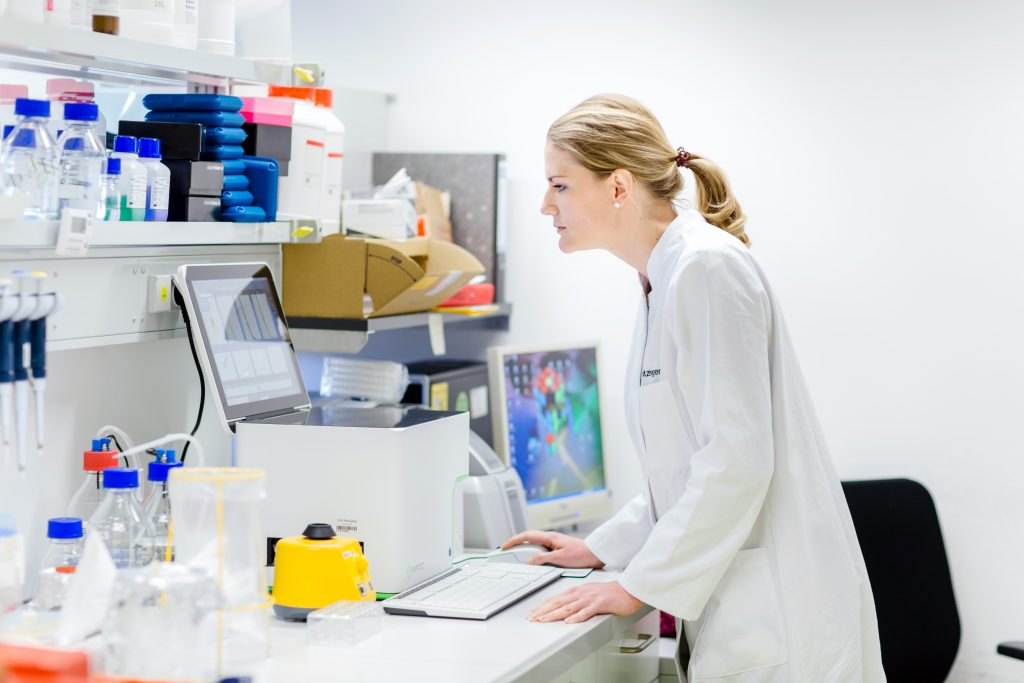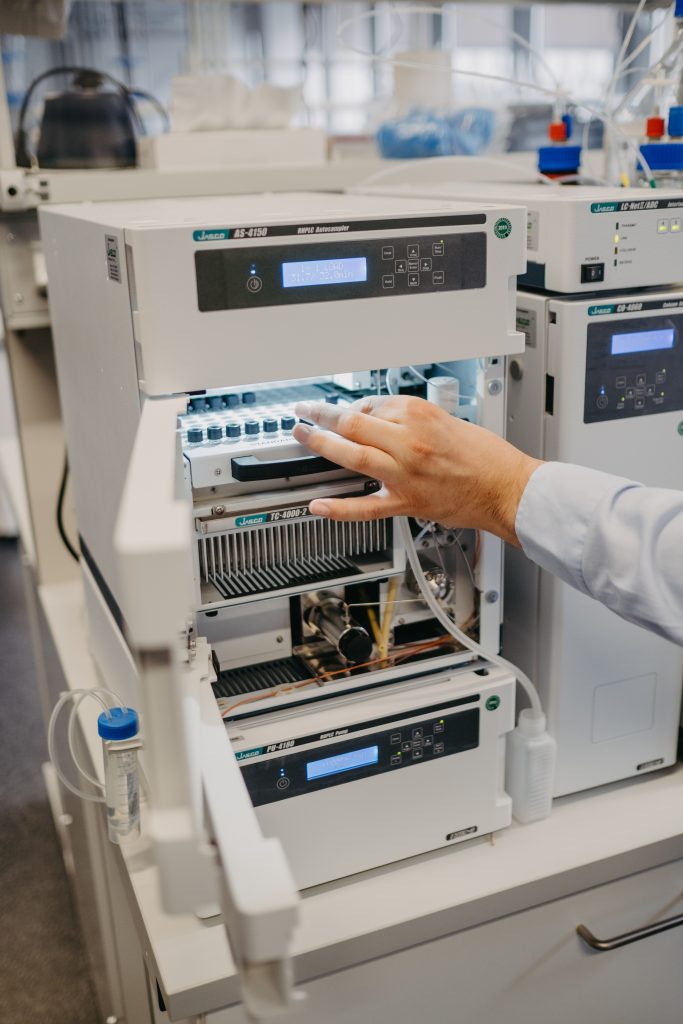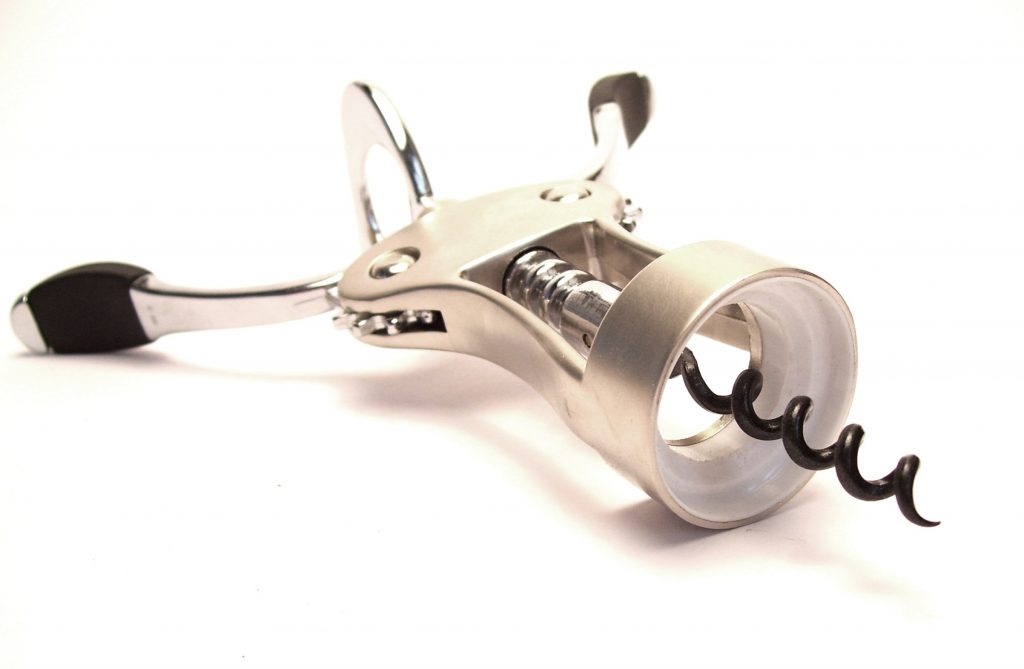PINOT: Project for Development of Artificial Intelligence in enologic Technology

The aroma of wines is complex and as diverse as tastes are different. Wine aroma depends on a wide variety of factors. As a natural product, wine contains a large number of aroma-relevant substances in low to high concentrations. No wine is like the other. This is what makes wine so special and so critical to produce and assess.
Comprehensive aroma analysis is most commonly done using gas chromatography in combination with mass spectrometry (GC-MS). However, such analysis is currently limited to large laboratories, as the instrumentation required is not only expensive but also demands considerable technical expertise.
Project “PINOT” aims to develop a practical, easy-to-use, and cost-effective technology for the AI-supported analysis of wine aroma, for widespread use by vintners, sommeliers, and wine merchants. By combining sensors and artificial intelligence, our goal is to come as close as possible to human sen-sory perception. We hope to create systems capable of extracting and evaluating information from the complex mixture of substances that give wine its aroma, in much the same way that winemakers and sommeliers would, but unbound by human limitations. This will create opportunities for wine production and wine trade.

The Project strives for two applications:
a) During wine production processes:
The first application is a system that supports winemakers by monitoring fermentation and aging processes in real time, providing early warning of potential off-flavours as soon as possible. The system should therefore be able to detect substances such as hydrogen sulphide, acetic acid, and acetaldehyde at low concentrations even below their sensory odour detection thresholds.
b) In bottled wine:

The second application is a system for the analysis of bottled wine, translating sensor signals into textual descriptions of aroma using the vocabulary from traditional human sensory evaluation. A database of aroma profiles will be constructed, allowing the comparison of wines according to specific criteria such as region, vintage, and producer.
The concentrations of different aroma substances and how they interact is crucial to the quality of wine. The project is first investigating to what extent an aroma “fingerprint” can be generated by sensing volatile substances and further processing the signals with artificial intelligence. The selection, development, and validation of suitable sensors, in combination with AI, are carried out under controlled conditions using an experimental gas mixing installation as well as under real winery and wine lab conditions. To generate a sufficient database for AI training, a system for automated sampling is used.
Targeting the human sense of smell, the PINOT project bridges the gap between sensory perception and chemical analysis. In order to predict the human perception of wine aroma, a database will be built using reference wines that undergo both chemical analysis and sensory evaluation, as well as fingerprinting by a sensor system. This data combined will be used to train AI algorithms to predict aroma perception based on the sensor signals. The design and operation of the sensor systems will be further optimised using AI algorithms to identify signal parameters relevant to the prediction of wine aroma.
